26 Things You Can Start Today That Could Change Your Horse’s Life

1. Evolve Your Thinking

Horses evolved over millions of years for a very specific way of life. But these days, most horses are living a pretty “unnatural” life. Training, trailering, eating grain and living in a stall all put stress on your horse’s body. Luckily, there are ways to adapt your horse’s feeding program to help him cope.
2. Weigh Your Hay
Your horse was designed to graze all day long, but that’s just not practical or even possible for many barns. No matter your horse’s situation, he should be eating 1-2% of his body weight in forage per day (for a 1000 lbs horse that’s 10-20 pounds!). Unfortunately, a “flake” is not a unit of weight measurement. But you don’t have to step on the scale for every meal. With each new shipment of hay, you can weigh several bales, then divide the average weight by the average number of flakes.
3. What’s in the Bag?
You know your horse gets a scoop of something, but do you know what it actually is? There are three main types of horse feed: ration balancers, fortified grains and complete feeds.
• Ration balancers only provide vitamins, minerals and protein, and they typically come with a serving size of 1-2 lbs.
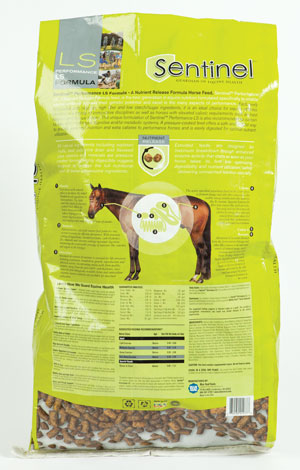
• Fortified grains include all that, plus a significant source of energy (calories), with an average serving size around 6-9 lbs. Most pelleted grains and sweet feeds fall within the category of “fortified grains.”
• Last but not least, there’s complete feeds, which contain all of the above and a full serving of fiber. Essentially, complete feeds are meant to replace hay in the diet of senior horses who have trouble chewing and digesting efficiently. Since they’re intended to replace the hay in the diet, complete feeds have a serving size of 15-20 lbs per day!
(SENTINEL and GUARDIAN OF EQUINE HEALTH are marks of Blue Seal Feed, which has no affiliation with SmartPak Equine.)
4. Less is More
Concentrated sources of energy, like grain, are not a natural part of horses’ diets, so only feed the minimum amount needed to maintain healthy weight and support performance. For hard keepers and extreme athletes, instead of maxing out the grain ration, consider adding a quality fat supplement for a healthy source of additional calories.
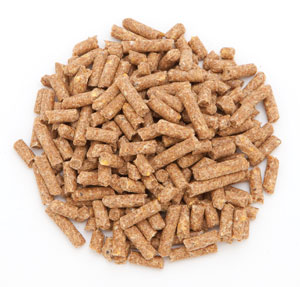
5. Go Graze-y
Pasture is your horse’s ideal feed source. If it were up to him, he’d graze up to 17 hours a day to meet his nutritional needs (and you thought you liked to snack!). For most horses, the more access to fresh pasture you can give them, the better. Got an easy keeper? Worried about the lush green grass in the spring? Throw on a grazing muzzle and your horse can enjoy the outdoors in safety.
6. Feeding Frequency
Ingesting a large amount of grain can cause hindgut acidosis, which can lead to colic and laminitis. Instead of one or two large meals, try feeding smaller meals throughout the day.
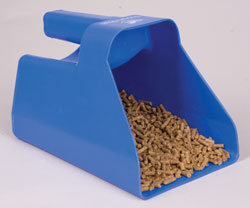
7. Filling in the Gaps

Grain is very calorie dense, and most horses will either gain weight or have too much energy if they receive a full serving. But when you cut back on grain, your horse misses out on key vitamins and minerals, too. In fact, our survey of barns found that 7 out of 10 horses weren’t getting enough vitamins and minerals from their hay and grain alone.
If your horse doesn’t get a full serving of fortified grain, add a vitamin/mineral supplement to make sure his bases are covered. Check out SmartPak.com/SmartVites to see our comprehensive lineup of targeted vitamin/mineral supplements.
8. Powered by Protein
Many horse owners focus on the total amount or crude protein in their horse’s diet, but equally (or more) important is the quality of that protein. Check your horse’s feed and make sure that the essential amino acids Lysine, Methionine and Threonine are present. Amino acids are the building blocks of the proteins that make up tissues like muscles, bones and skin. If you’re concerned about the quality or amount of protein that your horse is getting, consider adding a supplement like Tri-Amino (#18489, $12.95) or SmartMuscle® Mass (#17181, $28.95).
9. Know the Score
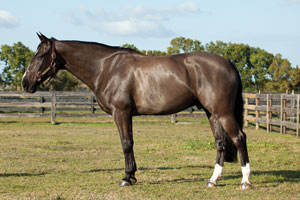
A recent study out of Virginia found that over half of the participating horses were overweight or obese. Fat ponies might be cute, but just like in humans, being too heavy can have serious consequences for your horse’s overall health. From joints to metabolism, extra weight can cause a lot of extra stress. Use the Henneke Body Condition Scoring Scale to regularly monitor your horse’s score. Not sure how? Ask your vet to
show you, or head to SmartPak.com/BodyScore.
10. Upgrade His Bucket

Thanks to its unique ergonomic shape, The Better Bucket (#19839, $16.95) encourages a more natural eating position. It also gives your horse easier access to his feed, so he’s less likely to bang the bucket around.
11. Mind Your 3’s And 6’s
Your horse needs both Omega 3 and Omega 6 fatty acids to stay healthy, but it’s important to maintain a proper balance. Omega 6s support pro-inflammatory reactions while Omega 3s support anti-inflammatory reactions, so you want to provide your horse with two to four times more Omega 3s than 6s in his diet. Unfortunately, grain is much higher in Omega 6s than 3s (anywhere from 8 to 24 times higher!). Bring your horse back into balance with SmartOmega 3 (#18294, $13.95) and watch his good health shine through!
12. Just Say “No” To Corn Oil
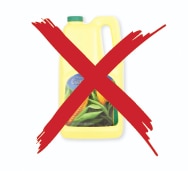 There’s no denying it’ll make your horse shiny, but at what cost? Corn oil is loaded with pro-inflammatory Omega 6 Fatty Acids. A high amount of Omega 6s can lead to a chronic state of inflammation, which can have a negative impact on cellular health throughout the body. Skip the jug and opt for a smarter solution—head to tip 13 to learn more!
There’s no denying it’ll make your horse shiny, but at what cost? Corn oil is loaded with pro-inflammatory Omega 6 Fatty Acids. A high amount of Omega 6s can lead to a chronic state of inflammation, which can have a negative impact on cellular health throughout the body. Skip the jug and opt for a smarter solution—head to tip 13 to learn more!
13. Get Your Shine On, The Healthy Way
Many oils can be much higher in pro-inflammatory Omega 6s than they are in anti-inflammatory Omega 3s (in some cases up to 200 times higher!) So skip the jug and support your horse with beneficial Omega 3 fatty acids from flax seed or fish oil with supplements like Omega Horseshine (#10182, $22.95) or SmartShine Ultra (#16319, $19.95).
14. Treat Him Right
Skip the sugar and reward your horse the healthy way with super-tasty, all-natural Hilton Herballs (#15382, $5.50).
15. Stressed Out?
Studies have shown that up to 60% of performance horses have gastric ulcers. Training, trailering, living in a stall, and feeding grain all put stress on your horse, increasing his risk for gastric ulcers. Lower his stress and support his stomach to help keep him happy, healthy and performing his best.
16. Give Him A Break
Make sure that your horse’s downtime truly is downtime. Even if he’s not working, traveling to a competition or living in a busy barn can be very stressful. If possible, give him time to unwind in a peaceful pasture.
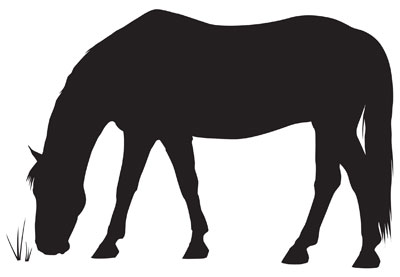
17. Find Him A Friend
Horses are herd animals, so without a buddy, turnout can be an additional source of stress. Similarly, having an aggressive pasture mate is no picnic. Find your horse a buddy that will play nice with him and his tummy
will thank you!
18. Let Him Eat Hay
The more time your horse’s stomach sits empty, the more its sensitive lining is exposed to harsh stomach acids. If he can’t have free choice grass hay for dietary or barn management reasons, pick up a Small Hole Hay Net (#19916, $16.95) to make the hay he has last a lot longer.
19. Gut Check
When selecting a daily supplement, look for ingredients to neutralize excess acid, soothing herbs, and amino acids that support healing of the stomach lining. These supplements provide a buffer when fed near meals,
support GI cell renewal and certain herbs can help calm and soothe the stomach lining. U-Gard Pellets (#15477, $22.95) and SmartGut (#18245, $37.95) are both popular choices for comprehensive gastric support.
20. A Happy Healthy Hindgut
Probiotics are the “good bugs” or beneficial bacteria that live in your horse’s hindgut and help break down his food. Prebiotics provide nourishment to help these microbes thrive. Digestive enzymes like amylase, lipase and protease help the body break down starch, fat and protein. Supplements like SmartDigest® Ultra (#16312, $29.95) and SUCCEED (#12755, $83.70) can help keep things . . . ahem . . . running smoothly.
21. On The Clock
Keep track of how much time your horse spends inside vs. out; with food and without; in work vs. at rest. The further he is away from his natural state, the more support he’ll likely need.
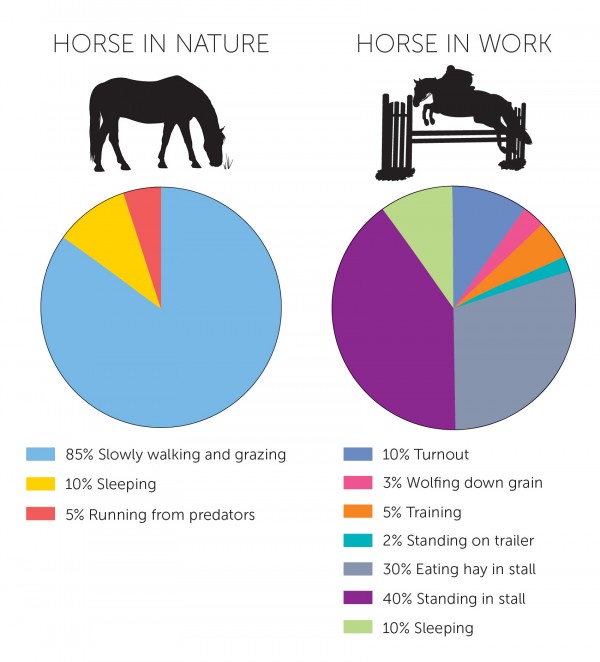
22. Get Your Head Our Of The Sand
Research shows that feeding Psyllium along with probiotics and prebiotics improves fecal sand clearance and may reduce the possibility of sand colic. If your horse gets turned out on sandy soil, feed SmartSand Purge (#19475, $19.95) for a tasty way to keep him feeling good.
23. Fresh Steam
Unless you grow your own hay, you don’t have much control over the quality. But you can make the best of the hay you’ve got. Steaming kills mold, reduces dust and makes hay softer and tastier. HayGain Steamers (#19761, #19760, #19759, from $874.95).

24. Ditch the Buckets…
25. …And Switch to SmartPaks
26. Pass The Salt
Salt is critical for normal nerve and muscle function, and if your horse doesn’t get enough salt, he may not drink enough water. A horse in no work needs one ounce of salt per day all year round, and hot weather and exercise increase that need even more. Hay, pasture and commercial feeds provide virtually no salt, and many horses dislike traditional salt blocks. SmartLytes® Pellets (#19585, $12.95) are great for picky eaters. For a free-choice source that doubles as a stall toy, try the Himalayan Salt (#14870, from $7.95).